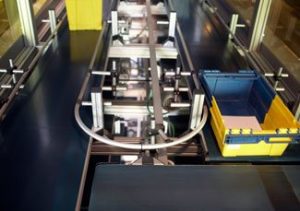Lets work together



Suite 3A, Chapel Allerton House, 114 Harrogate Road, Leeds, LS7 4NY
ukinfo@integrated-skills.com
+44 (0) 3300 888 670
Case Studies

Working closely with postal carriers, Swiss Post harnessed RouteSmart for ArcGIS to benchmark delivery times for 2,300 routes throughout Switzerland. They then optimized the routes to save over 1.3 million CHF in 2013, significantly decreasing the carriers’ individual delivery times.
The Swiss Post has been delivering mail throughout Switzerland since 1849. This public limited company services vastly different geographic areas, ranging from the country’s lowlands, to the mountains, to large cosmopolitan cities like Geneva and Zürich.
The Head for Route Planning and Editing, Markus Steinmann, together with his team of Routing Specialists, has reorganized over 2,300 routes in more than 90 facilities.
The verification of the sequences by the Delivery Team Manager was initially completed on paper
(manually), then moved to Microsoft Excel and color coded maps.
As Switzerland grew, the buildings, related traffic, and mail volume increased. Using an Oracle Database, new delivery points were added manually at the apparent best sequence based on information from the mail sorting centers. The process was not ideal because new points were added where routes had capacity, causing the routes to become less geographically compact, and increasing travel times.
Realizing the inefficiencies of this system, local management reached out to Steinmann and his team to reorganize their routes. They had already integrated GIS and geocoded every building, as well as every post box – over 1.7 million addresses.
Steinmann and his team were able to visualize the routes electronically, but sought a tool that would set them on the road to improvement. “We needed to have something new and we knew that we couldn’t do it without help – like digital help – so we set [our sights] on GIS and found RouteSmart,” he says.

Swiss Post looked to automate the routing process, and management was ready to commit. Steinmann describes the approach, saying that Swiss Post, “wants to invest, because we know that it pays back in the end, so [we are] keen on new technology. Everything that can be done automatically is something that we gain, so [Swiss Post] is really moving in that direction, and we are profiting from that.”
Steinmann’s team analyzed competitors and RouteSmart was a great match for Swiss Post because they already depended on Esri’s ArcGIS platform. “We found that RouteSmart fits better into our environment. We have worked with Esri, and RouteSmart is just an add-on to our GIS family, so it was logical and financially much more interesting for us,” Steinmann said.
They engaged RouteSmart in 2009 and Steinmann and his team underwent training, advancing to optimization in just six months. In 2010, he and his team introduced RouteSmart for ArcGIS to the postmen as a tool they’d use collaboratively to optimize their routes. In 2011, Swiss Post set up a competency center with three routing specialists that would oversee 9,000 routes. In 2012, they added two more specialists to manage the workload. They now use RouteSmart for larger reorganization projects on demand.
Steinmann marries RouteSmart automation with Esri’s GIS tools to make the process even more efficient. “We try to make everything as automated as possible for ourselves, so we just need to click one button instead of clicking more. Doing the same routines all over again is tiring, so after a while I need to make something new or do something new, and as long as I can better a situation I am happy with what I do. If everything is as good as it can get and everybody can use it, then I look for a new challenge.”
Steinmann’s philosophy is based on carrier involvement, communication, and the idea of Kaizen, the process of continuous improvement. “We go to the carriers, we talk to people before we do anything, so it’s really working together, improving together,” he explains.
Steinmann requests the priorities from local management six months in advance. He and his team meet with each stakeholder at least four times during the route improvement process.
The biggest roadblock Steinmann encountered was convincing the postmen that these routes could help. Since many employees had delivered for over 20 years, they were wary of letting anyone redesign their routes. Steinmann and his team made the postmen an integral part of the decision-making process. He gathered their specific information through a comprehensive questionnaire that tracked each unique route – including the business customers and which routes, roads, or tracks were used.
The routing specialists added this data to RouteSmart, which generated several options with maps and timetables that the postmen could tweak for their individual needs. “In the end it is them doing the route, it’s not us, so I really need to accommodate them, their needs, their desires. I work very closely with the postmen,” says Steinmann.
The team can now successfully benchmark and optimize about 1,000 routes per year. In a three-year
period, their implementation of RouteSmart for ArcGIS has produced the following results:
The team was able to gain 3-5% efficiencies in time spent, and save over 2.5 million CHF. Just as important was streamlining the time Steinmann’s team spent on the optimization process. “One of the points is also how much time we, as routing specialists, use to get an organization going, because we can’t really invest tons of hours just to get something to like five minutes [savings] per day, so we need to be efficient ourselves,” he notes.
From our Partners RouteSmart Technologies.
Would you like to know more about this Case Study? Fill in your details below and let us know how we can help.
Website Designed & Built by we are CODA